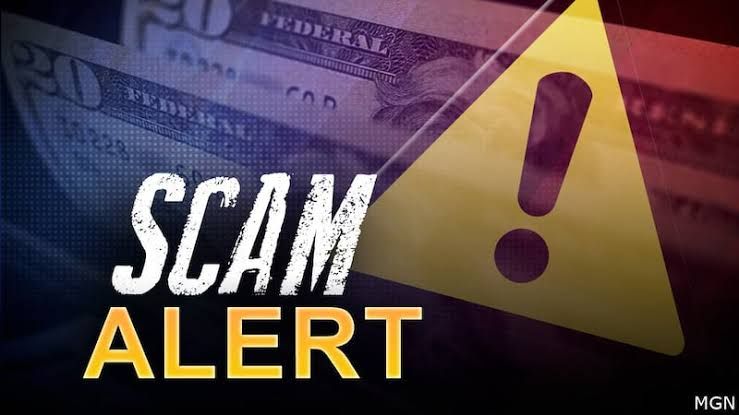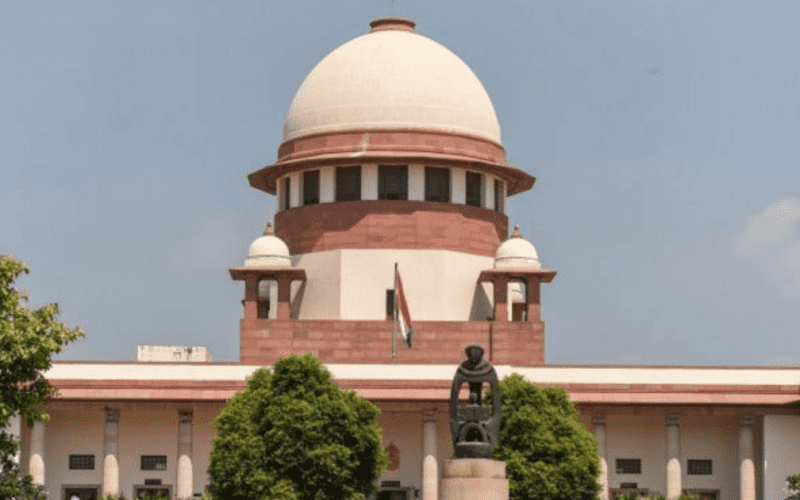➢ INTRODUCTION
Because of restricted access to the official banking system, another scam has surfaced.
Because they lack knowledge about banks and are in need of money, moneylenders have created an informal banking network. On the flip side, if these moneylenders’ power was not curtailed and informal institutions were not diminished, crafty financiers would eventually emerge and offer enticing schemes such as Ponzi. This is a shady investment plan that promises high rates of return with no risk to investors. This scheme makes money by attracting new investors. The Saradha Scam is one of these. The demise of Saradha Group’s Ponzi scheme sparked a serious financial and political catastrophe. In 2006, the Saradha Group came into being. Investors were lured to these Ponzi schemes by Saradha Group’s unconscionable earnings and dependable investments. Agents climbed the enormous agent pyramid by receiving commendation gifts in addition to incentive payments of up to 30% on deposits. The Group used gambling as a means of money laundering, which led to this scam.
Saradha Group attempted to lure in other enterprises in order to circumvent the authorities. The Group’s front-line businesses, which generated money from the general public by issuing bonds and debentures such secured bonds and preferential debentures, are where the fraud first started.
➢ BACKGROUND
The curriculum was first established in the early 2000s by businessman Sudipto Sen. The Saradha Group, an umbrella group with 200 private members, runs it. Originally intended for smaller investors, the approach rapidly became well-liked since it produced substantial gains. The money was collected by a vast network of agents who were paid commissions exceeding twenty-five percent. The Saradha Group raised around Rs 2,500 crore in a few years. The company employed a range of marketing strategies to build its brand. To attract new investors, the company supported customary events like Durga Puja and invested in well-known football teams in addition to well-known marketing techniques like celebrity sponsorships. Soon after its launch, the project attracted investments from about 1.7 million individuals in Odisha, Assam, and Tripura. In connection with the issue, the CBI has questioned over a dozen TMC ministers and MLAs. A large number of these leaders took an active role in managing the company. Saradha’s brand ambassador was actor and TMC politician Satabdi Roy. After Saradha invested Rs 988 crore in the media company, Kunal Ghosh, the TMC MP, was chosen CEO. Another party leader who participated in the group’s media campaigns was Srinjoy Bose. Madan Mitra, who was the minister of transport for West Bengal at the time, led the group’s workers union. The group was purportedly connected to Matang Sinh, a Congressman, and Himanta Biswa Sarma, the then-leader of the Assam BJP, in addition to the TMC.
Problems within the organisation began to surface when SEBI ordered the organisation to stop accepting money from investors and get regulatory clearance before conducting its schemes. When it was realised that Saradha Group’s financial inflows were less than its outflows for the first time, the company had reached a crisis by January 2013. The hoax was exposed by agents and investors to the authorities by April, by which time it had collapsed. The West Bengal government originally formed a Special Investigation Team (SIT) under the direction of former Kolkata Police Commissioner Rajeev Kumar in order to investigate the matter. The Supreme Court requested that the case be transferred to the CBI in 2014. The CBI has accused Kumar of hiding material evidence from the agency and is keeping him as a potential defendant in the investigation. In February 2019, Kumar made headlines for the first time when the Kolkata police stopped the CBI from interrogating him. Bengal’s chief minister, Mamata Banerjee, arrived quickly and launched a three-day sit-in protest against the CBI’s conduct.
This was split into two stages:
Stage 1
1. They accompanied Sarada Maa, who is well respected in rural West Bengal and is the spouse of renowned spiritual figure Ramakrishna.
2. The offered the agents significant incentives. incentives that might account for as much as 40% of the total sum collected from the locals
3. As a result, it was simpler to establish an immediate network of word-of-mouth referral sources, investors, and agents.
Stage 2
The brilliant marketing scheme that uses celebrities and politicians to trick people is one example of this phase’s brilliance. The Saradha Group was the main sponsor of a network with members from other groups, and its commercials were shown on Bengali channels almost nonstop. The next move was a masterclass in itself.
The Saradha Group helped them with money laundering by forming (or not registering) more than 250 businesses. The regulator and watchdog, Mr. SEBI (Securities Exchange Board of India), stepped up and started notifying them. Saradha began a vigorous campaign to attract more investors. To establish their name, they made investments in food production, real estate, and vacation destinations. Furthermore, they cultivated close ties with well-known individuals like as Mithoon Chakraborty and Shatabdi Majumder, who subsequently functioned as their brand representatives. SEBI should approve them as the Companies Act of 1956 forbids soliciting funds from more than 50 investors. SEBI has been alerting the State government about the potential for a “Ponzi Scheme” since at least 2010, but none of the two have materialised. They nearly quadrupled the amount of money they collected in their first three years of business. An unusual phenomenon involved the coalition of politicians, celebrities, and the government, all of whom were engaged in embezzling the hard-earned money of the populace.
➢ ARGUMENTS BY BOTH PARTIES
The experienced counsel for the SEBI stated that his client has the necessary tools and machinery to draw proposals for the sale of such properties and has successfully completed several such transactions in the past, even if he did not dispute the matter that was assigned to the one-man committee. The applicants’ learned attorney argued that since her client’s offer in each of these applications exceeds the property’s value, her client should be permitted to buy the exact same at the amount stated in He claimed that SEBI should be given the go-ahead to sell these assets following offers. Experienced counsel for the petitioners said that his client has a competent system for soliciting tenders for the sale of such assets and has successfully completed many similar transactions in the past, even though he did not object to the matter being submitted to the one-man committee. Given that her client’s offer in each of these applications is greater than the property’s value, her client should be allowed to purchase the same at the price shown in. He suggested letting SEBI hold an auction of these properties following the opening of bids.
➢ JUDGEMENT
• CALCUTTA HIGH COURT
The court considered these reasons before directing that a one-man committee chaired by retired Justice S.P. Talukdar handle the matter. The aforementioned authorities shall, after deducting all expenses and fees, etc., deposit all corporate money with the one-man council or in any institution in accordance with their instructions. When it comes to selling the company’s properties that are the focus of the applications, SEBI will proceed according to its regular protocol. The applicants in these applications are also able to make their own offer submissions. After receiving all of the offers, the SEBI will have the option to run an auction in order to obtain a better offer or to accept the best price. The one-man committee will then receive a report that the authority has created. The bench dismissed the petition, saying that this committee’s consent is required for the transaction. The committee has the authority to direct SEBI or any other organisation to hold a fresh auction or advertisement if the circumstances demand it. Before becoming final, the offer that the council authorised will be brought before this court for approval.
• SUPREME COURT
Adv. Basabi Roy of the Calcutta High Court and RTI activist Akhil Gogoi of the Guwahati High Court filed PILs demanding a CBI investigation into the Saradha Group and other chit fund companies. Since “the implications of the fraud included other states,” a division bench of the Calcutta High Court declared that “a central authority would also do justice to the probe.” The state legislature was given a week by the Honourable Court to submit its investigative report so that it could be evaluated to see if the investigation was being conducted fairly. Unhappy with the verdict, the petitioners used a Special Leave Petition (SLP) to challenge it to the Supreme Court. Respondents in this matter, the state and municipal governments of Orissa, Jharkhand, and Tripura, requested that the SC mandate a CBI probe into all Indian money collecting agencies. The CBI was directed by the divisional bench of the Supreme Court to investigate all Ponzi schemes in Eastern India, including Saradha, on May 9, 2014. In addition, the court mandated that the dubious Ponzi schemes reimburse depositors following the resolution of any legal actions initiated by the Enforcement Directorate, which is authorised by federal law, and different state authorities, which are authorised by state law. All that is necessary to highlight is that the investigation into the fraud should not be restricted to individuals directly involved in the running of businesses, but rather should involve questioning a large number of people about their involvement in the series and developing, as the Supreme Court stated in the Subrata Chattaraj appeal1. all incidents that have had an effect on multiple fronts. The Supreme Court ruled that investigating the larger conspiracy idea is necessary in order to determine the truth. Three distinct petitions were filed in the present case. Clubbing petitions must appear before the Lower Court as a “Specially Assigned Matter” and be taken off the list temporarily, according to a ruling by the Honourable Supreme Court. One of the defendants in the aforementioned scam, Debabrata Sarkar, recently filed a bail application under Section 439 of the Criminal Procedure Code; however, the Honourable SC dismissed it due to considerations of public interest.
➢ CONCLUSION
The majority of Indians are diligent and hardworking people, but progress is hampered by those who hold power or control the system. However, when a tax payer’s significant financial commitment to growth is utilised to offset the loss brought on by multi-crore schemes, he or she truly feels robbed. While there were several scams in India, none was more significant than the Rs 2000 crore scam, which cost 25 lakhs of earnest investors their hard-earned money. An further stain on the Indian political and financial scandal roster is the SHARADA Scam. Every scam includes a component that makes it possible for individuals to make false money off of it, but the Saradha scam also had all of the tension and drama needed for it to develop and come to light. It would be unfair to declare TMC and Mamata Banerjee criminals while the matter is still pending. Nonetheless, considering that thousands of people had their hard-earned money stolen, posting bail is still not advised. As a powerful gang, they would try to share the money they made from the crime so they wouldn’t get sued for breaching the law in public. If they were released on bail at this stage, it would impede the investigation. A legitimate club in the country is closely associated with the scammers, therefore there is fear that they would use their connections to block legal action. The public interest in this case surpasses the individual’s interests, thus the Hon’ble Court must take a different tack and ensure a fair, impartial, and impartial investigation in accordance with justice and equity.
Author– ANSUMAN PATNAIK, a Student of SOA NATIONAL INSTITUTE OF LAW .





